It was not long ago
that Aung San Suu Kyi came to the Hague to defend Myanmar to rebuff charges that Myanmar carried out a systematic
campaign of mass murder, rape and terror against the Rohingya.
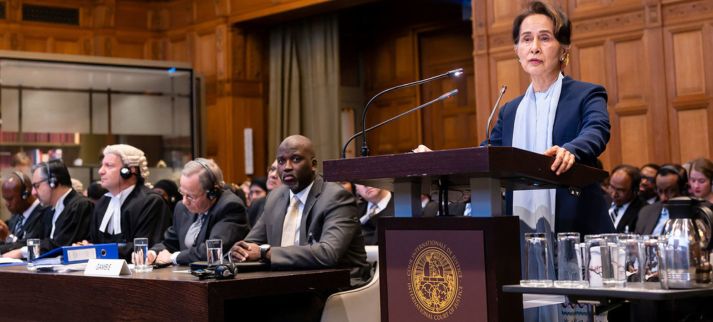
Here fiery speach where she claimed the Rohingya were in fact the
guilty party which did
little to convince the UN Security Council which referred the matter
to the International Criminal Court, in order to establish an ad-hoc tribunal
on Myanmar or having countries with universal jurisdiction use it to deal with
the plight of the Rohingya Muslims who fled
military crackdowns to Bangladesh.
During a 17 Sept.
news conference in the Palais des Nations a UN panel stated that Myanmar incurs
state responsibility under the prohibition against genocide and crimes against
humanity, as well as for other violations of international human rights law and
international humanitarian law. And that Myanmar’s civilian leader, Daw
Aung San Suu Kyi, could face prosecution for crimes against humanity committed
by the military.
Whereby now Suu
Kyi herself became
the victim of the military she once so violently defended.
Given the current
situation however the U.N. special envoy for Myanmar now warns that the country
faces the possibility of civil war at
an unprecedented scale.
Does Myanmar now face civil war?
On Friday, most
Myanmar citizens woke up to no internet access.
Myanmar's military
junta has cut all
wireless internet services until
further notice, in what appears to be part of a concerted effort to control
communications and messaging in the Southeast Asian country.
Rights group Human
Rights Watch (HRW) said Friday that the junta had also "forcibly
disappeared hundreds of people" -- including politicians, election officials,
journalists, activists and protesters -- since the February 1 coup.
The co-chairs of the
United Nations Group of Friends for the Protection of Journalists on
Thursday issued a
statement voicing
"deep concern over the attacks on the right to freedom of opinion and
expression and the situation of journalists and media workers in Myanmar and
strongly condemn their harassment, arbitrary arrests and detention, as well as
of human rights defenders and other members of civil society."
Myanmar’s rulers this week crossed a threshold few governments
breach anymore: They have killed, by most estimates, more than 500 unarmed citizens of
their own country.
Such massacres by
government forces have, even in a time of rising nationalism and
authoritarianism, been declining worldwide. This is the seventh in the past
decade, compared with 23 in the 1990s, according to data from Uppsala University in Sweden.
And the violence in
Myanmar was carried out by a sort of government that has grown rarer still:
outright military rule.
Myanmar does not
signify a return to an earlier era, experts believe, so much as an echo. Its
violence hints at the ways in which the world has changed, and hasn’t.
Governments are more
oppressive but, with a handful of exceptions like Syria, less likely to kill
their own people at scale. Dictatorships are more common but less overt. And
world powers have come to shun the government crackdowns they once encouraged.
Myanmar is unusual
partly because it is a country out of time, resembling a bygone style of
autocracy, but also for the ways in which it is unique.
And those traits,
experts say, helped enable the February coup led by Senior Gen. Min Aung Hlaing, and the subsequent
crackdown on peaceful protesters. They also point to a long and difficult road
ahead.
No two crackdowns are
alike, each brought about by events and personalities particular to its time
and place. But scholars have identified a set of factors that make a government
likelier to kill large numbers of its own citizens. And virtually all are present
in Myanmar.
Perhaps the most
important warning sign: direct military rule.
Military rulers tend
to be more aggressive in deploying troops to crush dissent. And unlike civilian
autocrats, they have little reason to fear the troops turning on them, as
happened when Romania’s armed forces ousted the communist rulers who’d ordered them
to open fire on protesters in 1989.
Most primes military
rulers get paranoid and don’t have a sense for what levels of dissent are
acceptable in society, so they might be quicker to use force against their
citizens, such rulers usually tend to have a kneejerk reactions to threats.
Myanmar’s generals
are typical in this sense: experienced at fighting, politically powerful, but
unfamiliar with the give-and-take required of even autocratic rule. Force is
the tool they know best.
The country bears
another serious risk factor: its civil war, raging against various ethnic
militias since the 1940s.
Most militaries see
themselves as protectors against foreign threats, with a strong taboo against
committing violence at home.
But civil war can
break that taboo, normalizing the idea that deploying domestically is
legitimate, and making it easier to see fellow citizens as enemies.
And it accustoms
generals to the idea that their proper place is not guarding the borders but imposing
order at home. Myanmar’s military has considered this its role for decades —
even when it allowed elections and limited civilian government in the years
before the coup, it granted itself permanent seats in the legislature.
Few factors predict
future government massacres like past ones. And it has been less than four
years since Myanmar’s conducted one of the bloodiest of the 21st century,
targeting thousands of members of the country’s Rohingya minority in what the
United Nations and human rights groups called a
genocidal campaign.
International
outrage, though severe, did little to the leaders’ calculus. And much of the
domestic response to the Rohingya killings was supportive. Social media filled
with praise for the campaign and the military officers who led it.
The current violence
is not surprising “because of the genocide and the fact that they were able to
get away with it with very little repercussions,” Dr. Frantz said.
Once a military kills
its own with impunity, and even feels it benefited from the bloodshed, there is
very little to stop it from doing so again.
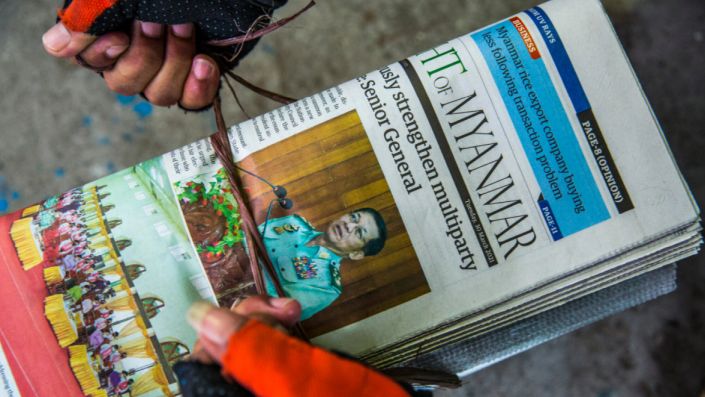
Country missed out on a change how dictatorship works
The era of armed
forces rule peaked between 1960 and 1990, when dozens of countries around the
world came under full or partial military dictatorships, many of them propped
up by the United States or the Soviet Union.
When the Cold War
ended, that number collapsed to just a handful, and has been steadily declining
ever since, according to data maintained by One Earth Future, a research
foundation.
Government-sponsored
massacres became less frequent too. But a wave in the 1990s were mostly in
countries that, like Myanmar, had histories of civil war, weak institutions,
high poverty rates and politically powerful militaries, Sudan, Rwanda, Nigeria,
Afghanistan, the Democratic Republic of Congo, among others.
Though they largely
failing to stop those killings as they happened, world leaders and institutions
like the United Nations built systems to encourage democracy and avert future
atrocities.
Myanmar, a pariah
state that had sealed itself off from the world until reopening in 2011, didn’t
much benefit from those efforts.
The country also
missed out on a global change in how dictatorship works.
A growing number of
countries have shifted toward systems where a strongman rises democratically but
then consolidates power. These countries still hold elections and call
themselves democracies, but heavily restrict freedoms and political rivals.
Think Russia, Turkey or Venezuela.
Repression in the
last couple of years has actually gotten worse in dictatorships. But
large-scale crackdowns are rarer, in part because today’s dictators are getting
savvier in how they oppress.
Only 20 years ago, 70
percent of protest movements demanding democracy or systemic change succeeded.
But that number has since plummeted to a historic low of 30 percent, according
to a study by Dr. Erica Chenoweth of Harvard University.
Much of the change,
Chenoweth wrote, came through something called “authoritarian learning.”
New-style dictators
were wary of calling in the military, which might turn against them. And mass
violence would shatter their democratic pretensions. So they developed
practices to frustrate or fracture citizen movements: jailing protest leaders,
stirring up nationalism, flooding social media with disinformation.
Some Myanmar
experts argue that the country’s civilian leader, Daw Aung San
Suu Kyi, was pulling the government in this direction before the
generals seized power for themselves.
But there is one way,
experts stress, in which the world has not much changed: its seeming inability
to stop government-sponsored killings once they begin.
Once the military is
involved in politics, it’s hard to get them out if they don’t want to get out.
Most military rulers
do step down after a few years, usually in response to an economic downturn,
protest movement or other headache that they decide they don’t want. And
usually with a promise that they can keep their ranks and salaries.
But there is a big
exception: Rulers who oversee atrocities tend to stay in office more or less
for life.
They usually cling on
until the end because they know there’s a lot of uncertainty should they
leave power. Rather than risk prison time or war crimes charges, they do
whatever it takes to hold power.
As to what next, the
restoration of ‘democracy’ should not be the goal of Western policies
vis-à-vis Myanmar. Instead, the goal should be restoration of some form or
semblance of civilian and constitutional rule.
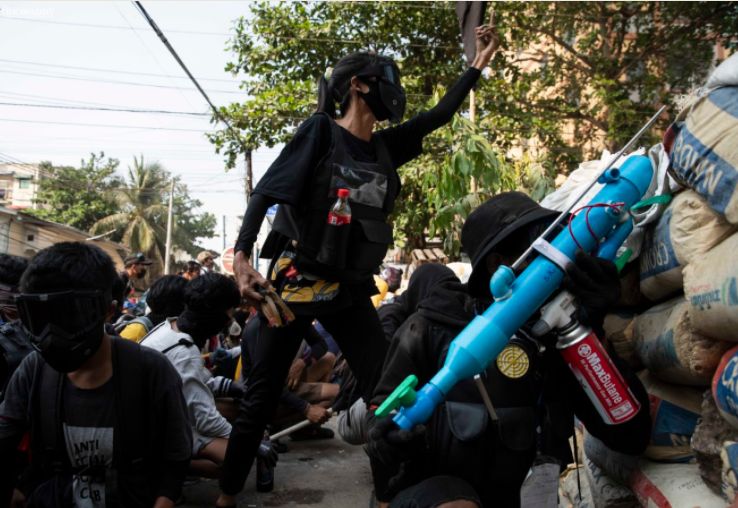
Conclusion
The military regime’s
brutal killings and extreme violence against peaceful anti-regime protests
since its coup have led Myanmar to the verge of a full-blown civil war and
urban combat.
For weeks following
the coup, the approximately 20 ethnic armed groups that have fought for
autonomy for decades, but which signed ceasefire agreements with previous
governments in recent years, did nothing in regard to the nationwide
anti-regime protests. But more recently, some of them, including the KIA and
the Karen National Union (KNU), based in the eastern part of the country, have
started announcing that they stand with the people against the military
dictatorship.
On March 27, Brigade
5 of the KNU’s military wing, the Karen National Liberation Army (KNLA), seized
a hilltop outpost held by the military regime in Karen State. The KNLA killed
10 soldiers including an officer and arrested eight soldiers as prisoners of
war.
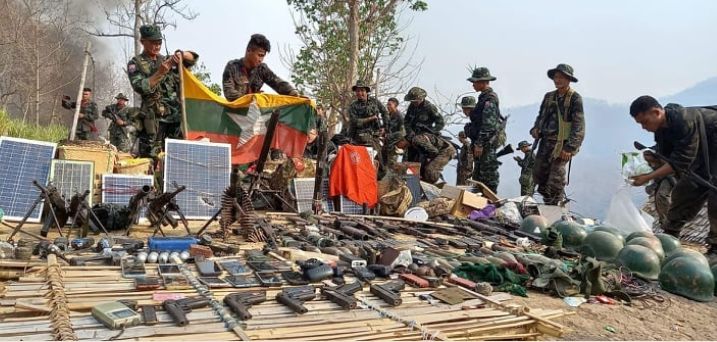
In retaliation,
within a few hours the regime launched airstrikes against the KNLA using two
fighter jets in Papun District, Karen State. More
than a dozen Karen people were killed and thousands of people fled their
villages in the wake of subsequent airstrikes.
In northern Kachin
State, the KIA launched offensives against a military outpost in the
jade-mining hub of Hpakant and another military outpost in Injangyang
Township on March 15, days after the regime’s troops killed at least three
young protesters in Myitkyina, the state capital. In the following days, the
KIA launched more offensives and clashes continued between the KIA and the
regime’s troops.
The KNU is among 10
ethnic armed groups that signed the Nationwide Ceasefire Agreement (NCA) with
the previous government, as well as the military itself. But the regime’s
brutal killings have forced it officially to break the agreement. More clashes
between the KIA and the KNU and the military are highly likely in Karen and
Kachin states. And police stations and military outposts in the towns and
cities in those areas are likely to continue to be targeted in the coming days,
weeks and months.
And that’s not all.
In late March, the
Brotherhood Alliance of three armed groups warned the military that it would
collaborate with other ethnic armed organizations and pro-democracy supporters
to defend the people from the regime’s brutal crackdowns if the violence continued.
The Arakan Army (AA), the Myanmar National Democratic Alliance Army (MNDAA) and
Ta’ang National Liberation Army (TNLA) issued their
condemnation of the regime amid daily increases in the civilian death toll.
These armed groups
are active in their territories in western Rakhine State and in northern Shan
State. Unlike the KNU, they have not signed the NCA.
The anti-military
dictatorship movement sees no room for compromise at all. Civil war and urban
conflict, therefore, seem unavoidable. Myanmar has already suffered a more than
70-year-long civil war since independence in 1948, though the fighting has mostly
been confined to remote or border areas. But the war this time will be
different. Not only will the civil war spread inland from the borders, but
urban warfare will erupt from within our cities.
All five of the above
armed organizations have urged the coup leaders to stop their violent
crackdowns, release all civilian leaders and detainees, restore democracy and
accept the results of the 2020 general election, which the NLD won in a
landslide.
More of the 20 armed
organizations are likely to join the fight that erupted in response to the
anti-coup movement in the cities if the military regime keeps killing innocent
people and terrorizing the entire population. If that is their plan, however, they
should act soon, as the military regime pays no heed not only to its own people
but also to the international community. Over the past two months, the world
has repeatedly made the same demands as those listed above. But the coup
leaders have just ignored them, which shows they will not stop killing and
violently oppressing their own people.
And with the
anti-military dictatorship movement sees no room for compromise at all. Civil
war and urban conflict, therefore, seem unavoidable. Myanmar has already
suffered a more than 70-year-long civil war since independence in 1948, though
the fighting has mostly been confined to remote or border areas. But the war
this time will be different. Not only will the civil war spread inland from the
borders, but urban warfare will erupt from within its cities it seems.
As a recent article
in Australia mentioned Aung Maunge was warned he
faced life imprisonment if he rejoined demonstrations. That has only
strengthened his conviction that peaceful protest alone cannot dislodge the
junta. He is now headed north to Kachin State,
where rebel forces are training young protesters in armed resistance.
“The military will do
anything, kill anyone, to stay in power,” he said. “We
have to combine this social movement with armed struggle. I know a lot of
other people also going to Kachin and Kayin State, because we have no choice.
Also, one of the
oldest and largest ethnic armed groups, the Karen National Union (KNU), said
that protesters coming from the lowlands of central Myanmar have been trekking
to the rebels’ hilly jungle holdouts for training since late March. “We train
people who want to be trained and who want to fight against the military
regime,” said Maj. Gen. Nerdah Bo Mya, chief of staff
of the Karen National Defense Organization, an armed wing of the KNU. “We are
[on] the same boat, helping one another. [We] help each other to survive and
get rid of the military regime and to re-establish what we call the democratic
government,” he said.
The general said
ethnic Karenni, Rakhine, and Shan rebel groups were
doing the same.
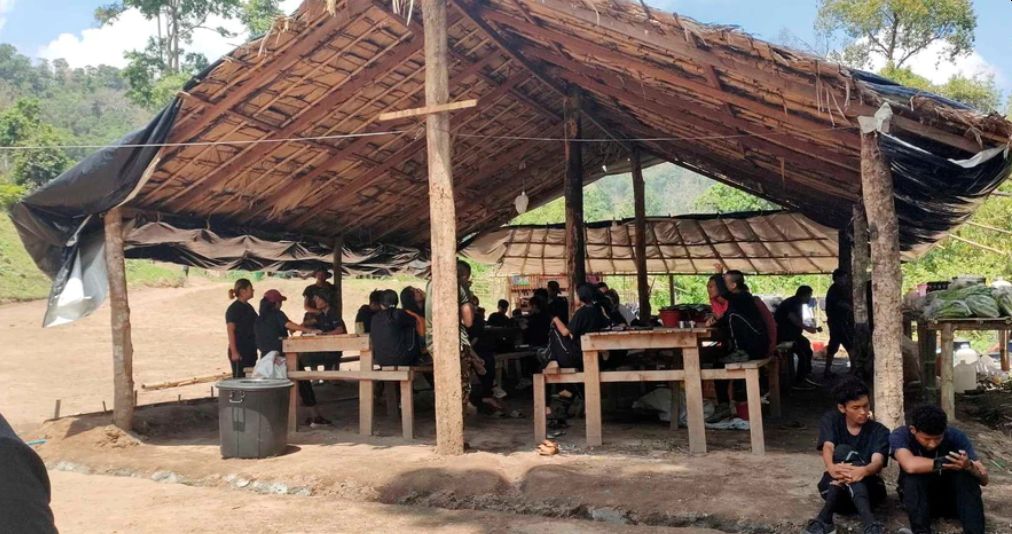
For updates click homepage here